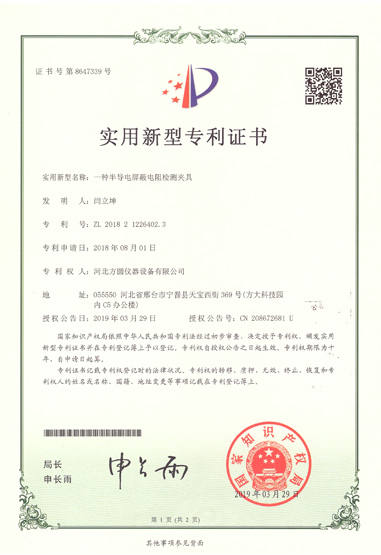china cable bunched burning test machine
Understanding the China Cable Bunched Burning Test Machine
In the realm of electrical engineering and fire safety, the significance of testing materials for fire resistance cannot be overstated. This is particularly true for cables, which are essential components in a variety of applications ranging from residential wiring to complex industrial systems. Among the key tools used for assessing the fire performance of electrical cables is the China cable bunched burning test machine.
Purpose and Importance
The cable bunched burning test machine is designed to evaluate the flammability and fire resistance of bundled cables under controlled conditions. It plays a critical role in ensuring that cables meet national and international safety standards. By simulating real-world fire scenarios, manufacturers can identify potential hazards early in the design process, thereby reducing the risk of catastrophic failures that could lead to not only extensive property damage but also loss of life.
How It Works
The machine typically involves placing a standardized bundle of cables in a test chamber. Once positioned, a controlled flame is applied to the test specimen. The device monitors various parameters, including the time it takes for the cables to ignite, the rate of flame spread, and the duration of burning. After the test, a detailed analysis is conducted to assess the performance of the bundled cables.
Compliance and Standards
china cable bunched burning test machine

Compliance with fire safety standards is crucial for manufacturers, and the results from the cable bunched burning test contribute significantly to this. Various national and international standards govern these tests, including the IEC 60332 standards, which outline the requirements for the test methods and apparatus. By adhering to these standards, manufacturers not only ensure the safety of their products but also bolster their credibility in the marketplace.
Applications Across Industries
The applications of a cable bunched burning test machine extend to numerous industries including construction, transportation, telecommunications, and automotive sectors. In construction, for example, the appropriate selection of fire-resistant cables can be pivotal in high-rise buildings to ensure that electrical systems function reliably during a fire incident. In the automotive industry, cables with superior fire-resistant properties can prevent electrical failures that may lead to vehicle fires.
Technological Advancements
Recent advancements in technology have enabled the development of more sophisticated cable bunched burning test machines. Modern systems are equipped with automated data collection and analysis features, allowing for more precise measurements and quicker reporting. Enhanced user interfaces and automation not only simplify the testing process but also minimize potential human error, thus providing more reliable results.
Conclusion
The China cable bunched burning test machine represents an essential aspect of fire safety testing in electrical cable production. Its role in assessing the fire behavior of bundled cables is critical to ensuring the safety and reliability of electrical systems worldwide. As technology continues to evolve, these machines will likely become even more advanced, offering better insights into cable performance under fire conditions. In a world where safety standards are paramount, investing in such testing equipment is not just a regulatory requirement; it is a commitment to protecting lives and properties from the devastating effects of fire. By ensuring that all cables meet stringent fire safety standards, manufacturers can contribute to safer environments across all sectors.
-
Why the Conductor Resistance Constant Temperature Measurement Machine Redefines Precision
NewsJun.20,2025
-
Reliable Testing Starts Here: Why the High Insulation Resistance Measuring Instrument Is a Must-Have
NewsJun.20,2025
-
Flexible Cable Flexing Test Equipment: The Precision Standard for Cable Durability and Performance Testing
NewsJun.20,2025
-
Digital Measurement Projector: Precision Visualization for Modern Manufacturing
NewsJun.20,2025
-
Computer Control Electronic Tensile Tester: Precision and Power for the Modern Metal Industry
NewsJun.20,2025
-
Cable Spark Tester: Your Ultimate Insulation Assurance for Wire and Cable Testing
NewsJun.20,2025
 Copyright © 2025 Hebei Fangyuan Instrument & Equipment Co.,Ltd. All Rights Reserved. Sitemap | Privacy Policy
Copyright © 2025 Hebei Fangyuan Instrument & Equipment Co.,Ltd. All Rights Reserved. Sitemap | Privacy Policy
